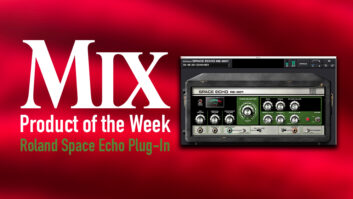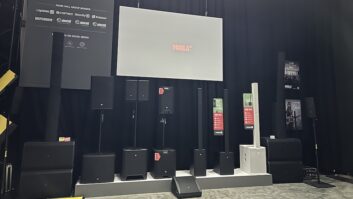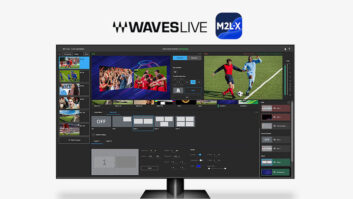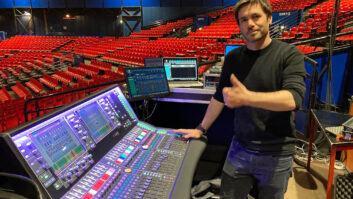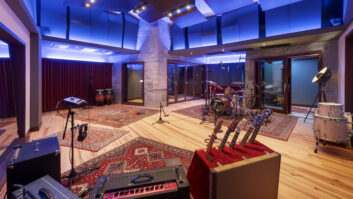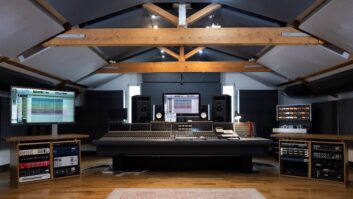
Pickering, On, Canada (August 15, 2024)—Grammy-winning, Jamaica-born, Canadian producer and songwriter Boi-1da got his initial break while still in his late teens, producing several songs on a number of Drake’s early mixtapes. Since then, he’s collaborated with some of the biggest names in the business, including Eminem, with whom he had his first Billboard Hot 100 Number One, in 2010, and Rihanna, whose “Work,” featuring Drake, brought him his second chart-topper in 2016. The hits have kept on coming as his production credits have grown to include a long list of hip-hop greats, including Kendrick Lamar, Nicki Minaj, Kanye West, Juice Wrld and others.
Boi-1da, who grew up listening to Jamaican music and is much in demand for his dancehall sound, travels a lot, says studio designer Martin Pilchner of Pilchner Schoustal International Inc. However, the producer also values his time at home, so he approached Pilchner to design a production suite in his house comparable to the commercial facilities in which he regularly works. The new studio, filling roughly 420 square feet, is tucked away off the family room on the lower level of his house in Pickering, Ontario, just east of Toronto. Enabling him to produce studio-quality beats and tracks at home while also offering plenty of space for collaborators, the room is intended to be the epitome of the modern production workflow.
“These guys don’t work on consoles,” Pilchner says. “They work on laptops, and a lot of times they’re all working together at the same time on different laptops.”

The studio design includes numerous ports around the studio, which also features a couple of couches at the rear of the room, into which collaborators can plug their computers. The setup enables anyone in the room to access the monitoring system and to transfer files to a centralized Pro Tools HDX system, which is interfaced via an Antelope Audio Galaxy. Revolution Custom Shop in Toronto designed the technical system, Pilchner reports. “Everybody can create all the different musical components, then consolidate them in one place and mix in Pro Tools.”
With no mixing console or producer’s desk in the room, to further encourage the collaborative process, Pilchner hit on the idea of configuring the long studio desk to curve toward the front wall at each end, the reverse of the more traditional design. “If you are sitting in the middle and collaborators are sitting on the left and right side, they can see each other and interact with each other more easily,” he says of the novel solution.
Mix’s Recording Studio Class of 2024
Of course, configuring the workspace at the front of the room for three people to sit side by side by side also demanded a wider, controlled sweet spot. “It was all about trying to get the mix window as wide as possible,” Pilcher confirms, a goal that was made slightly easier by the length of the room. “Then it was just a matter of getting rid of all the unwanted sidewall reflections to create the opportunity for consistency across the left and right side of the desk, which worked out pretty well.”
There is a large Augspurger in-wall main monitor system comprising Duo 12MF and Sub 212 units, something of a standard feature in today’s rap and modern pop production rooms. The studio also features a Genelec 7.1.4 monitoring setup. “The front channels of the Genelec Atmos system sit on motorized stands that lift up and down,” Pilchner explains. “If they want to work on the Genelecs, they press a button and they pop up.” When the room is configured for Dolby Atmos projects, the Augspurger subwoofers switch to handle the low-frequency extension. A Grace Design m908 provides monitor control, processing and management.

The controlled reflection geometry of the production space provides a smooth and uniform response for the Augspurger stereo and the Genelec Atmos systems, he continues. “The ceiling in the space wasn’t super-generous, so we had to eliminate the ceiling refractions. The front part of the ceiling is done with a fairly thick absorber that has a PG [perforated] finish. The back half of the room is all low-frequency trapping, but every other surface is diffusive; we built walnut diffusors with niches in them that light up.”
Because the space is well-damped, Pilchner says, Boi-1da can cut studio-quality vocals in the room. The racks at the front of the room house the expected outboard, including a vocal chain featuring a Tube-Tech CL 1B compressor and choice of AMS Neve 1073 or 1084 mic pre/EQs for use with the Sony C800 G PAC microphone. API 500 Series modules and an SPL MixDream summing mixer round out the processing complement.
Two windows in the rear wall of the room provide natural light. Those windows, together with the glass in the entranceway to the studio from the family room, are fitted with LCD glass that turns opaque for privacy at the touch of a button.
